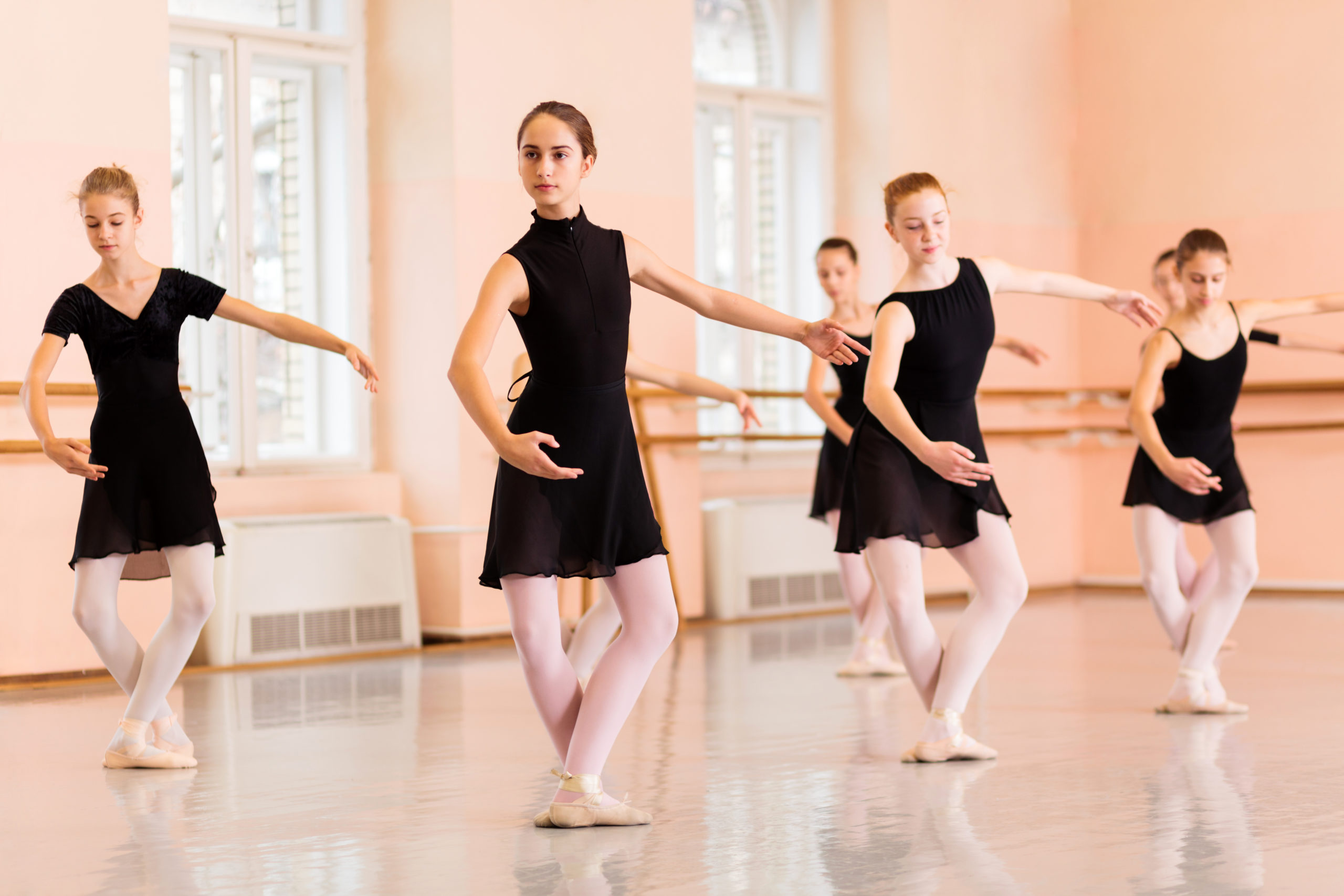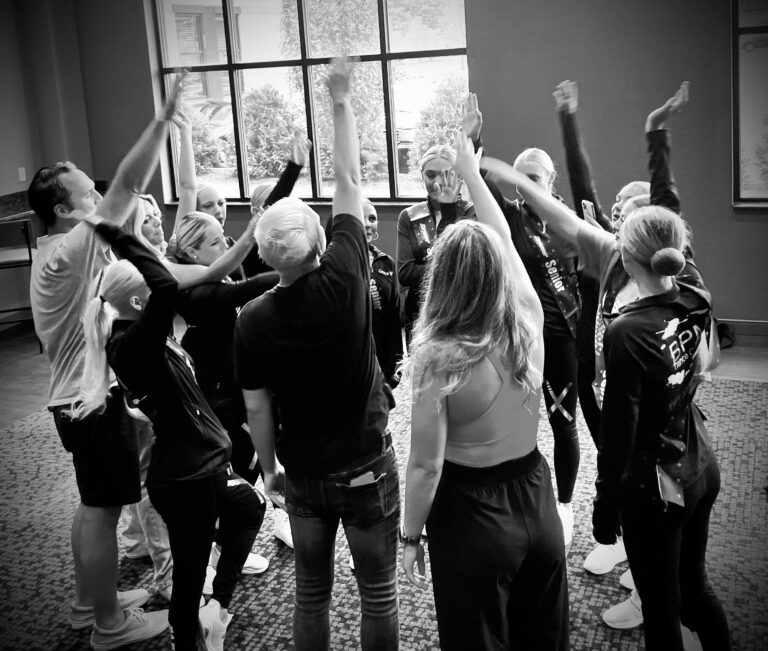
As a 17-year-old ballet student in an elite pre-professional ballet school, I was devastated to be sidelined with my first significant injury just weeks into rehearsals for the company’s Nutcracker. My left foot had been hurting for weeks; a dull ache that I could mostly ignore. But one afternoon I landed a jump, and the pain was so shocking that I crumpled to the floor. When the doctor told me that I had a stress fracture and that I would be unable to dance for eight weeks, the grief rattled through my body.
As an injured dancer, I was not excused from class unless it was to attend a doctor’s appointment or physical therapy. So, for eight weeks, I sat at the front of the room watching my peers advance in their training with my foot in an ice bucket. For each class, I was required to write down all the combinations and corrections and then hand them in to the main office. It felt like torture.
The COVID-19 pandemic has given us a unique opportunity to evaluate what has been serving our art form, and what has not. Strict attendance policies—and how we treat dancers who are sick, injured, or having mental health or family crises—are not exempt from this reevaluation. While having a cold may have done little to deter a dancer from missing class in the past, the pandemic has likely changed how we think about being sick in public forever. But like illness, injury and mental health struggles have consequences when unaddressed, and forcing dancers dealing with these issues to push through their pain or sit at the front of the studio likely won’t help them recover. So how can we rethink our approach to attendance—while still setting high expectations for dancers?
The Difference Between Showing Up and Being Motivated

Attendance is often used as a measure of motivation: The dancer who is there for every class must be more motivated to learn than a dancer who is not. But this can cast an unfair light on a dancer who is absent to care for themselves or their family. As Paula Thomson, a professor and dance coordinator at California State University, Northridge, as well as a clinical psychologist, puts it, “Participation and presence in the class shows me more about a dancer’s motivation than attendance.”
Dr. Lucie Clements, a dance psychologist based in the UK, says that when it comes to measuring motivation, she does not look at how full the motivation cup is, but, rather, what it is filled with. Is the dancer motivated to be in class because they love it, or are they motivated to attend because they are afraid? “That kind of motivation will not foster longevity in their love of dance,” she says. So while an ultimatum like “You can’t perform if you miss this many classes” may encourage a dancer to show up despite sickness or injury, the long-term effect may be that they disengage from loving dance.
During the pandemic, the dance department at Indiana University, Bloomington, had to eliminate attendance as a weight for a student’s grade. For department chair Sarah Wroth, this was a dramatic shift from the way dancers were usually evaluated. “There had to be a deep extension of trust,” she says. Instead of basing any part of their grade on the number of classes a dancer had taken, students were evaluated based on their engagement in class and their professionalism in communicating the need for absence.
Attendance and Injury
It’s a misconception that perfect attendance will equate to better performance, says Clements. “You are risking more harm than good if someone is hurt or sick,” she says, and cautions against rigid policies that include penalties. “As a psychologist, regulating any sort of behavior with punishment is archaic,” she says. “It perpetuates that you are not worth as much as the art.”

If the goal of an attendance policy is to ensure that a dancer is training as much as possible, encouraging dancers to show up and “push through” pain is a disservice to that goal. Alyssa Arms, a physical therapist who works with dancers in Colorado, says dance teachers should do the opposite by encouraging dancers to flag pain early on. “If they are pushing through and not seeking assistance, they are risking more damage and longer recovery,” she says. “It is so much easier to get on top of it early.”
For dancers who are sidelined by injury, having them sit and observe class has long been standard protocol. And while there are certainly benefits—like learning from the strengths and weaknesses of your peers, digesting corrections more fully and observing how a dancer applies them—being forced to watch every class can feel punitive. Arms would want an injured dancer to instead be focused on an exercise and conditioning program that is safe for their injury, which spending time watching class can make challenging to find time for. Or what if, as an alternative to watching class, a dancer were tasked with reading books about dance history or researching emerging choreographers?
My experience as an injured dancer, and being forced to sit at the front of the room, deeply contributed to my own mental health crisis that followed that injury. Clements advises teachers who work with her to take a different approach. “They should ask ‘What do you want to do?’ and after the dancer answers, they should ask ‘Why?’” she says. Clements says that while a dancer may say they want to be in the studio watching their peers, the “why” question may elicit a clearer understanding of what is best for them. At 17, I likely would have said, “Of course I want to be in class!” but when asked why, I would have been stumped. The answer, I know now, is that I would want to appear motivated.
The Future of Attendance Policies
At the college level, there may be attendance requirements in place for the institution to remain accredited. Thomson says that in the California State University system students are generally failed if they miss 35 percent of classes. But “professors can make individual accommodations,” she adds, and in light of the pandemic, they are more keen to create asynchronous learning opportunities to help a dancer meet the requirements. For example, a professor may decide to assign reading to a dancer or have them focus on a cross-training and strengthening regimen.

At Indiana University, Bloomington, attendance is still part of the grade, but a relatively small one. Wroth says that the need for more absences during the pandemic has presented another learning opportunity for the dancers: communication. “We can talk to the students about how their situation would be handled in a professional environment,” she says. “How do you communicate the need for this absence that shows professionalism?” In the future, she feels that a dancer missing class will be met with more care, understanding and compassion than pre-COVID.
In smaller dance schools or even pre-professional training programs, attendance can be more agilely reevaluated. Dance teachers and studio owners can start by asking themselves “Why?” when it comes to any strict policies. Is mandating that students show up no matter what going to produce the best dancers? In a field where we constantly remind dancers how replaceable they are, can we not also honor their autonomy to show up and work as they can?
I once performed in a production of The Nutcracker just hours after testing positive for the flu. At the time, I was supported for being tough and working through it. But I hope that today we can see that my participation in that performance was not in my own best interest or that of the dancers around me—just as showing up to class or rehearsal sick or injured is not in the best interest of the dancer, their peers or the production.




